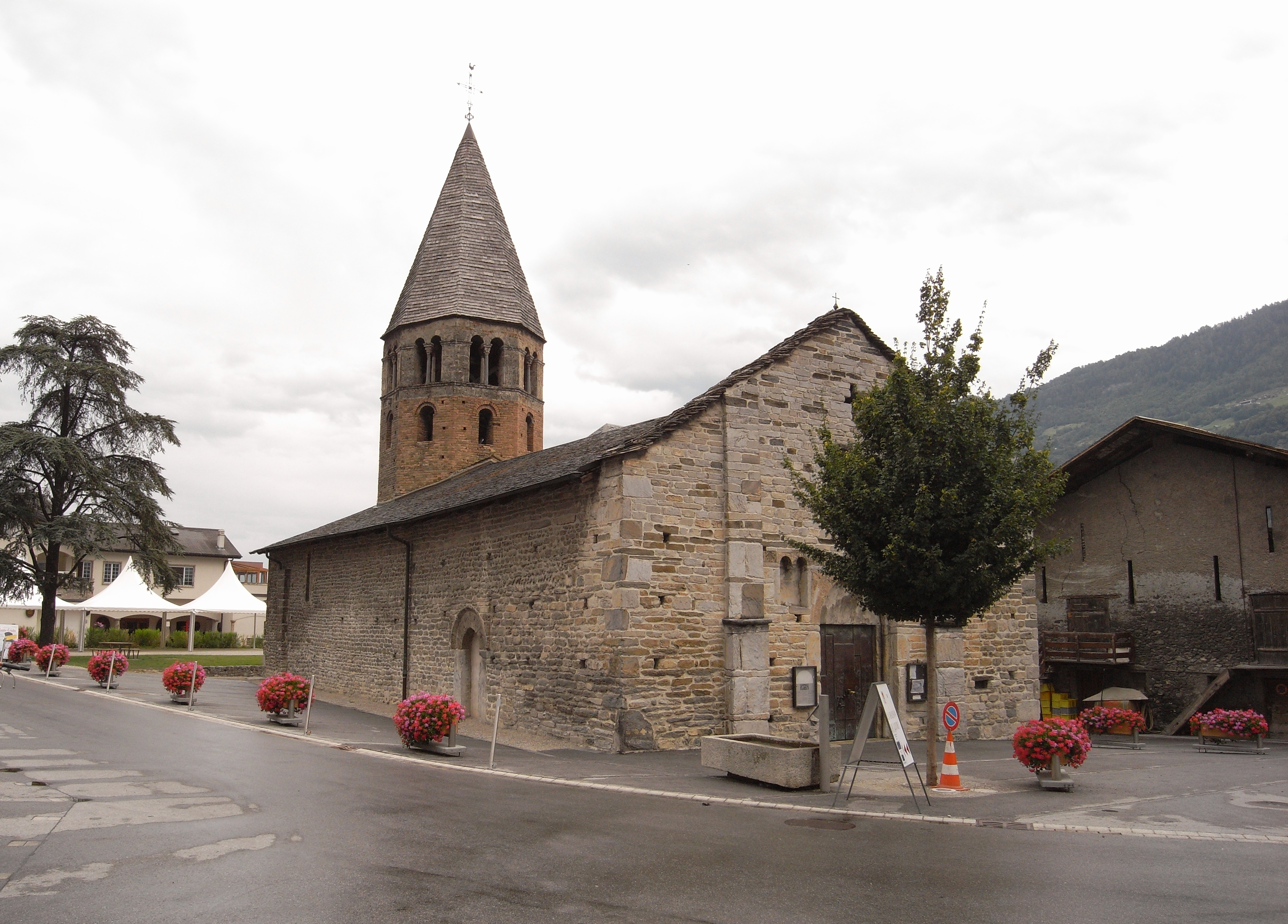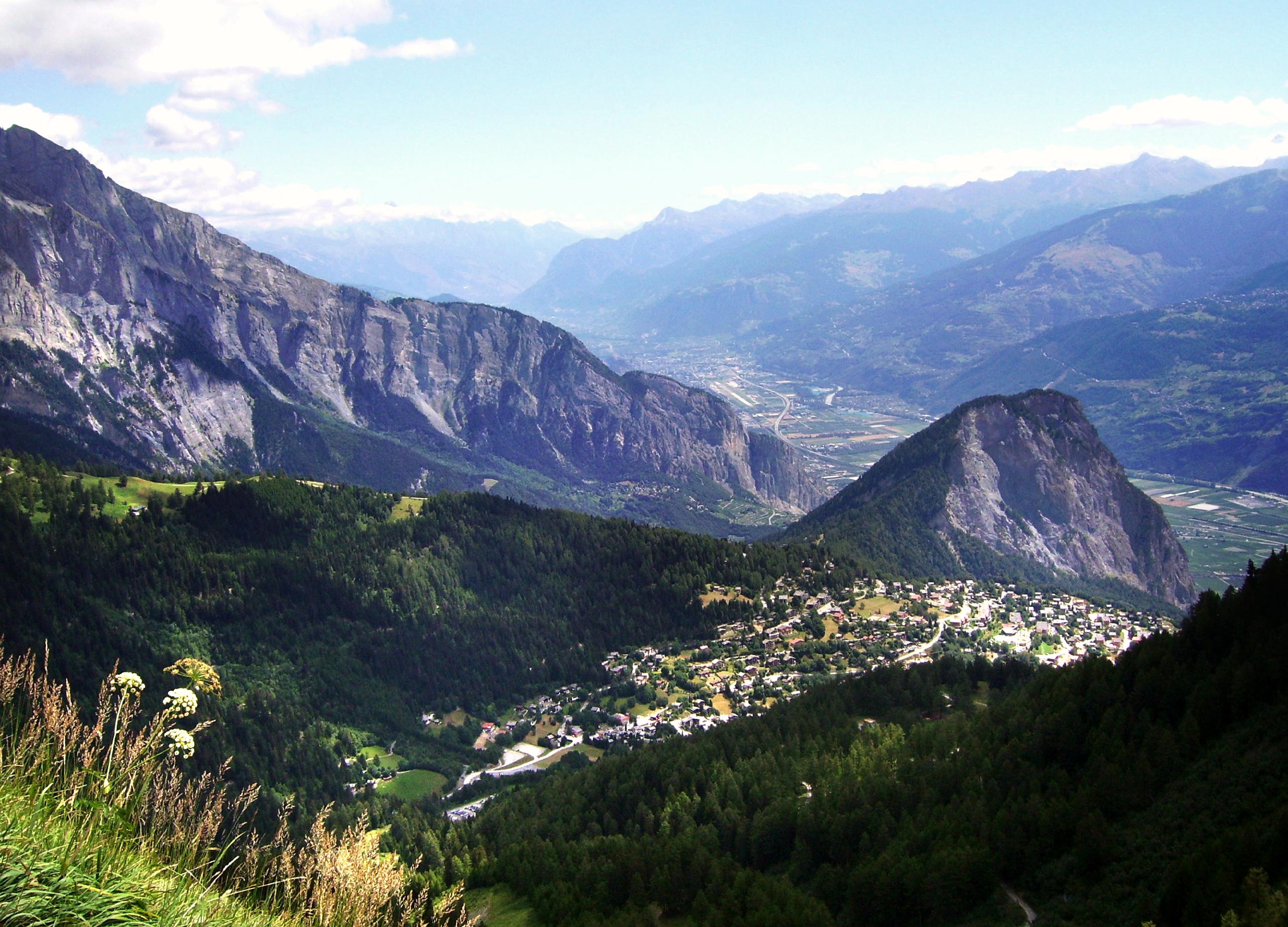|
Leytron
Leytron is a municipality in the district of Martigny in the canton of Valais in Switzerland. History Leytron is first mentioned in 1219 as ''Leitrun''. Geography Leytron has an area, , of . Of this area, or 27.1% is used for agricultural purposes, while or 30.1% is forested. Of the rest of the land, or 6.3% is settled (buildings or roads), or 0.6% is either rivers or lakes and or 36.2% is unproductive land.Swiss Federal Statistical Office-Land Use Statistics 2009 data accessed 25 March 2010 Of the built up area, housing and buildings made up 3.6% and transportation infrastructure made up 1.9%. Out of the forested land, 25.0% of the total land area is heavily forested and 3.8% is covered with orchards or small clusters of trees. Of the agric ... [...More Info...] [...Related Items...] OR: [Wikipedia] [Google] [Baidu] |
Martigny (district)
The district of Martigny is a district in the canton of Valais in Switzerland. It has a population of (as of ). Municipalities It comprises the following municipalities: Coat of arms The blazon of the municipal coat of arms is ''Gules, a Lion rampant double-queued Argent holding a mallet Or.'' Demographics Martigny has a population () of . Most of the population () speaks French (29,848 or 88.6%) as their first language, Portuguese is the second most common (1,268 or 3.8%) and Italian is the third (818 or 2.4%). There are 516 people who speak German and 17 people who speak Romansh. , the gender distribution of the population was 49.4% male and 50.6% female. The population was made up of 14,638 Swiss men (36.4% of the population) and 5,224 (13.0%) non-Swiss men. There were 15,790 Swiss women (39.3%) and 4,518 (11.2%) non-Swiss women. [...More Info...] [...Related Items...] OR: [Wikipedia] [Google] [Baidu] |
Fully
Fully () is a municipality in the district of Martigny in the canton of Valais in Switzerland. History Fully is first mentioned in the 11th Century as ''Fuliacum''. Geography Fully has an area, , of . Of this area, 30.5% is used for agricultural purposes, while 27.7% is forested. Of the rest of the land, 5.7% is settled (buildings or roads) and 36.2% is unproductive land. It is on the right bank of the river Rhône and is well known for its wines. Fully is just the administrative name of a group of several villages of Vers-l'Eglise (sometimes called Fully), Branson, Châtaignier and Randonnaz along with a number of hamlets. The natural reserve of Les Follatères (shared between Fully and Dorénaz), located on the south facing slopes above the Rhône elbow, has a variety of animal and plant species normally uncommon in Switzerland. Fully-suisse.jpg, Fully at the foot of the Grand Chavalard Colourful lizard - panoramio.jpg, Green lizard Cactuses.jpg, Cactuses (Opuntia) ... [...More Info...] [...Related Items...] OR: [Wikipedia] [Google] [Baidu] |
Riddes
Riddes is a municipality in the district of Martigny in the canton of Valais in Switzerland. History Riddes is first mentioned in 1001 as ''Ride''. It was previously known its German name ''Riden'', though that is not used any more. Geography Riddes has an area, , of . Of this area, 37.4% is used for agricultural purposes, while 37.1% is forested. Of the rest of the land, 9.1% is settled (buildings or roads) and 16.4% is unproductive land. The municipality is located in the Martigny district, on the left bank of the Rhone. It consists of the village of Riddes, the hamlet of Auddes, and the vacation resorts of La Tzoumaz in Mayens-de-Riddes and Écône. Coat of arms The blazon of the municipal coat of arms is ''Trierced per pale wavy Azure a wheat ear Or in chief two Mullets of Five Argent, Argent a bridge masoned towered Sable and Gules a Grille Or.'' Demographics Riddes has a population () of . , 24.0% of the population are resident foreign nationals. [...More Info...] [...Related Items...] OR: [Wikipedia] [Google] [Baidu] |
Saillon
Saillon () is a municipality in the district of Martigny in the canton of Valais in Switzerland. History Saillon is first mentioned in 1052 as ''castellum Psallionis''. The municipality was formerly known by its German name ''Schellon'', however, that name is no longer used. Geography Saillon has an area, , of . Of this area, or 37.6% is used for agricultural purposes, while or 20.5% is forested. Of the rest of the land, or 8.2% is settled (buildings or roads), or 2.3% is either rivers or lakes and or 31.1% is unproductive land.Swiss Federal Statistical Office-Land Use Statistics 2009 data accessed 25 March 2010 Of the built up area, housing and buildings made up 3.3% and transportation infrastructure made up 3.1%. Out of the forested land, ... [...More Info...] [...Related Items...] OR: [Wikipedia] [Google] [Baidu] |
Chamoson
Chamoson is a Municipalities of Switzerland, municipality in the district of Conthey (district), Conthey in the Cantons of Switzerland, canton of Valais in Switzerland. History Chamoson is first mentioned in 1050 as ''Camusia''. In 1233 it was mentioned as ''Scamosun''. Geography Chamoson has an area, , of . Of this area, or 24.7% is used for agricultural purposes, while or 31.1% is forested. Of the rest of the land, or 7.1% is settled (buildings or roads), or 1.7% is either rivers or lakes and or 35.2% is unproductive land.Swiss Federal Statistical Office-Land Use Statistics 2009 data accessed 25 March 2010 Of the built up area, housing and buildings made up 3.2% and transportation infrastructure made up 2.9%. Out of the forested land, 25.3% o ... [...More Info...] [...Related Items...] OR: [Wikipedia] [Google] [Baidu] |
Ovronnaz
Ovronnaz is a village located in the canton of Valais, Switzerland. It lies in the municipality of Leytron, close to Martigny. The village is located on the south side of the Bernese Alps, on a terrace above the Rhone river, at an altitude of 1,330 metres. The region is surrounded by the summits of Grand Chavalard, Petit and Grand Muveran and Haut de Cry. Ovronnaz is both a small ski resort and a spa resort A destination spa or health resort is a resort centered on a spa, such as a mineral spa. Historically, many such spas were developed at the location of natural hot springs or mineral springs; in the era before modern biochemical knowledge and .... External links * {{authority control Villages in Switzerland Ski areas and resorts in Switzerland Spa towns in Switzerland ... [...More Info...] [...Related Items...] OR: [Wikipedia] [Google] [Baidu] |
Conseil D'État (Switzerland)
This article lists the cantonal executives of Switzerland. Each canton of Switzerland has its own executive body, as well as legislative body. The Federal Council is the executive of the Swiss federal government, and is included for purposes of comparison. The cantonal executives are collegial bodies, each with 5 or 7 members. They are generally called ' (Executive Council) in German-speaking cantons and ' (State Council) in French-speaking cantons. General structure Presidents of the executives The above mentioned collegial bodies are formally chaired by a president. However those presidents are primus inter pares, that is a ''first among equals'' in the council. Other than presiding over meetings and the ability to cast tie-breaking votes the president only holds ceremonious powers. In the list below, if nothing else is noted, the official name of the office of president of the respective cantonal executive is ''Regierungsratspräsident'' (Government council presi ... [...More Info...] [...Related Items...] OR: [Wikipedia] [Google] [Baidu] |
Swiss People's Party
The Swiss People's Party (german: Schweizerische Volkspartei, SVP; rm, Partida populara Svizra, PPS), also known as the Democratic Union of the Centre (french: Union démocratique du centre, UDC; it, Unione Democratica di Centro, UDC), is a national-conservative, right-wing populist political party in Switzerland. Chaired by Marco Chiesa, it is the largest party in the Federal Assembly, with 53 members of the National Council and 6 of the Council of States. The SVP originated in 1971 as a merger of the Party of Farmers, Traders and Independents (BGB) and the Democratic Party, while the BGB, in turn, had been founded in the context of the emerging local farmers' parties in the late 1910s. The SVP initially did not enjoy any increased support beyond that of the BGB, retaining around 11% of the vote through the 1970s and 1980s. This changed however during the 1990s, when the party underwent deep structural and ideological changes under the influence of Christoph Blocher; the S ... [...More Info...] [...Related Items...] OR: [Wikipedia] [Google] [Baidu] |
Social Democratic Party Of Switzerland
The Social Democratic Party of Switzerland (german: Sozialdemokratische Partei der Schweiz; SP; rm, Partida Socialdemocrata da la Svizra) or Swiss Socialist Party (french: Parti socialiste suisse, it, Partito Socialista Svizzero; PS), is a political party in Switzerland. The SP has had two representatives on the Federal Council since 1960 and received the second highest total number of votes in the 2019 Swiss federal election. The SP was founded on 21 October 1888 and is currently the second largest of the four leading coalition political parties in Switzerland. It is the only left-leaning party with representatives on the Federal Council, currently Alain Berset and Simonetta Sommaruga. As of September 2019, the SP is the second largest political party in the Federal Assembly. Unlike most other Swiss parties, the SP is the largest pro-European party in Switzerland and supports Swiss membership of the European Union. Additionally, it is strongly opposed to capitalism and ma ... [...More Info...] [...Related Items...] OR: [Wikipedia] [Google] [Baidu] |
Voter Turnout
In political science, voter turnout is the participation rate (often defined as those who cast a ballot) of a given election. This can be the percentage of registered voters, eligible voters, or all voting-age people. According to Stanford University political scientists Adam Bonica and Michael McFaul, there is a consensus among political scientists that "democracies perform better when more people vote." Institutional factors drive the vast majority of differences in turnout rates.Michael McDonald and Samuel Popkin"The Myth of the Vanishing Voter"in American Political Science Review. December 2001. p. 970. For example, simpler parliamentary democracies where voters get shorter ballots, fewer elections, and a multi-party system that makes accountability easier see much higher turnout than the systems of the United States, Japan, and Switzerland. Significance Some parts of society are more likely to vote than others. As turnout approaches 90%, significant differences between v ... [...More Info...] [...Related Items...] OR: [Wikipedia] [Google] [Baidu] |
Primary Sector Of The Economy
The primary sector of the economy includes any industry involved in the extraction and production of raw materials, such as farming, logging, fishing, forestry and mining. The primary sector tends to make up a larger portion of the economy in developing countries than it does in developed countries. For example, in 2018, agriculture, forestry, and fishing comprised more than 15% of GDP in sub-Saharan Africa but less than 1% of GDP in North America. In developed countries the primary sector has become more technologically advanced, enabling for example the mechanization of farming, as compared with lower-tech methods in poorer countries. More developed economies may invest additional capital in primary means of production: for example, in the United States corn belt, combine harvesters pick the corn, and sprayers spray large amounts of insecticides, herbicides and fungicides, producing a higher yield than is possible using less capital-intensive techniques. These technolo ... [...More Info...] [...Related Items...] OR: [Wikipedia] [Google] [Baidu] |







